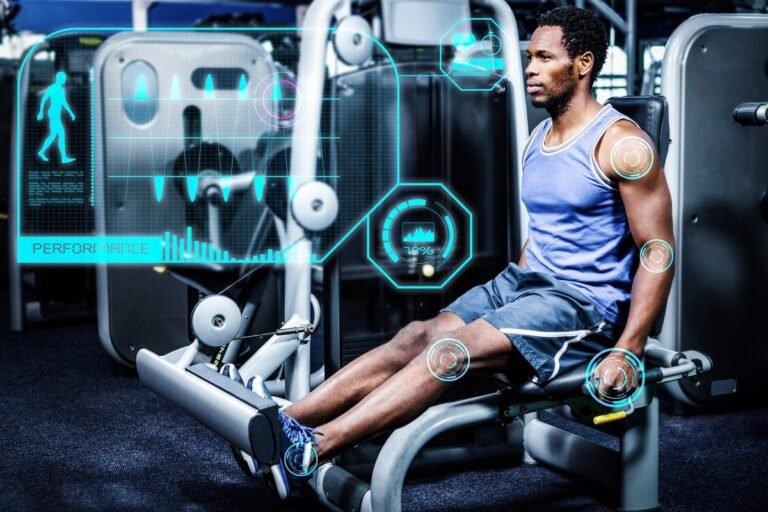(Image credit: MoFit)
In today’s world, the boundaries between the physical and digital realms are blurring, especially in the realm of fitness and sports. The concept of gym sessions and training drills is no longer limited to just physical exercise. It’s about data-driven insights, personalized training plans, and virtual environments that challenge our traditional notions of movement and athletic performance. This evolution is more than just a trend, it’s a revolution, making fitness and sport more accessible, appealing and effective for people around the world.
The history of fitness reflects humanity’s quest for strength, health, and vitality. From the gymnastics of the ancient Greeks to his early 20th century bodybuilding boom, the journey was long and varied. However, over the past few decades, digital innovation has accelerated this evolution to an unprecedented degree. Once a niche market for tech enthusiasts, wearable technology has now gone mainstream, offering users the ability to track steps, monitor heart rate, and even analyze sleep patterns. The fitness app turns your smartphone into your personal trainer, nutritionist and workout buddy, all rolled into one. These advances have made fitness regimes more nuanced, personalized, and data-driven than ever before.
Modern gyms are a testament to the advancement of technology. Smart equipment integrated with IoT tracks your movements, provides feedback on your form, and suggests weight adjustments to optimize your training. This technology not only increases safety and efficiency, but also adds an element of gamification to exercise, making it more appealing. Digital membership cards, app-based access to facilities, and online communities to share progress and challenges are redefining the gym experience. Additionally, virtual reality brings users an immersive fitness experience, allowing them to cycle through virtual landscapes and compete in digital arenas, all from the gym floor.
The field of professional sports has changed due to advances in technology. Detailed performance data, once the province of high-end research facilities, is now readily available through wearable technology. Teams and coaches use this data to fine-tune strategy, adjust training, and minimize injury risk. AI-powered analytics provides insight into game patterns and opponent strategies, giving your team a competitive edge. Additionally, technology has improved the spectator experience by giving fans new ways to engage with their favorite sports and athletes through augmented reality and virtual reality.
Integrating technology into fitness and sports offers many benefits. It democratizes fitness and makes it more accessible to people with disabilities and remote locations through online platforms and virtual training programs. Personalization is also a major benefit, with AI and data analytics providing tailored advice that significantly improves individual performance and satisfaction.
However, these advances are not without challenges. Privacy concerns are at the forefront, and the collection and analysis of personal health data raises significant ethical questions. The digital divide is another issue, as those without access to modern technology are at a disadvantage. Furthermore, over-reliance on technology risks leading to a disconnect from the fundamental joy and physicality of sports and exercise.
Let’s say Emma is obsessed with running. Emma’s journey from casual runner to marathon finisher demonstrates the transformative power of technology in personal fitness. Using a comprehensive fitness app, Emma received not only a training plan, but also motivation and community support. The app’s real-time feedback on her pace, heart rate, and even her running form helped her make gradual improvements. This personalized digital coaching addressed her specific needs and challenges, making her goals more achievable. Emma’s story focuses not only on technology’s ability to enhance her physical performance, but also its role in building mental resilience and a sense of accomplishment.
Looking to the future, the intersection of fitness, sports, and technology is poised for further innovation. Augmented reality could revolutionize at-home training by projecting digital instructors into users’ living spaces or overlaying performance metrics on smart glasses while they run. The Internet of Things (IoT) promises a future where fitness equipment seamlessly communicates with wearable devices, creating an integrated ecosystem of health data. This can lead to a whole new fitness experience where your daily activities, diet, and sleep patterns are all integrated into a comprehensive wellness plan. Additionally, the potential for social VR sports leagues could redefine the concept of team sports and allow players to participate in global competitions from their living rooms.
The fusion of technology, fitness and sports is more than just a trend. It’s a paradigm shift that redefines the way we view physical activity and athletic performance. As we navigate this new landscape, it is important to take advantage of the opportunities technology presents while keeping in mind the challenges it presents.


